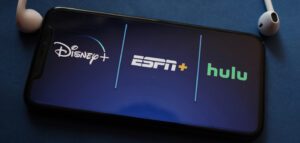 While big video platforms such as YouTube and Facebook provide unparalleled reach and targetability, marketers aren’t completely sold on the insularity of these environments – or their ability to augment data beyond the platforms’ own four walls.
While big video platforms such as YouTube and Facebook provide unparalleled reach and targetability, marketers aren’t completely sold on the insularity of these environments – or their ability to augment data beyond the platforms’ own four walls.
Pixability, which originated as a tool for agencies and marketers to assess high-value YouTube channels and audiences, wants to meet this call. The company on Tuesday rolled out Pixability v4, a video ad-buying system for YouTube, Facebook, Instagram and Twitter.
Although the tool isn’t positioned as a demand-side platform per se, the intent is to enable cross-platform video buys on social using a common set of metrics, said Pixability CEO Bettina Hein, an MIT fellow who founded the company in 2008.
“Marketers are using all these disparate walled garden platforms and they don’t know what they’re getting for their money comparative to other environments,” Hein said. “In addition, they can’t use their data on one platform to apply to another, or dynamically allocate spend between platforms as campaigns progress.”
Pixability v4 was designed to solve a key measurement challenge by normalizing video performance indicators between platforms, since each have different criteria for qualifying a view.
Pixability worked with Reebok, for instance, to cross-check video performance on TrueView, Google’s skippable format, versus Facebook’s native in-feed ads.
Reebok used Pixability’s platform to run A/B tests on the same campaign creative and targeted demographics across Facebook and YouTube. The tool helped the brand optimize campaign results in real time and compared cross-platform insights on the fly.
The user experience on the two platforms is not directly comparable; Facebook video is feed-based with formats that take up more screen real estate than YouTube on mobile, while YouTube had more interactive features, such as cards and companion banners.
But Pixability discovered some commonalities too, like when click-through rate was the main objective, 30-second video assets performed well across Facebook and YouTube, so the difference was negligible. But it also determined that when branding was the desired outcome, users on YouTube tended to be much more intent-driven than on Facebook.
The distinct ad formats and measurement approaches of some of big video platforms are a “complex problem to solve,” so more standardized metrics and campaign planning are a welcome development for Jessica Ruscito, director of US media and digital branding at Reebok.
Media buyers agreed.
AdExchanger Daily
Get our editors’ roundup delivered to your inbox every weekday.
Daily Roundup
“One of the big problems we see when we’re distributing a video is, ‘Does this content make sense for this target?’” said Elizabeth Bleser, director of digital strategy at independent mid-size agency Blue Chip Worldwide Marketing, which also uses Pixability’s platform. “Although Instagram may make sense from a demographic perspective, it might not map back to our goals for content planning.”
Blue Chip’s clients, which include big CPG brands such as Heinz and P&G, aren’t looking to digital video as a reach tactic, Bleser said. They’re more interested in tailoring video campaigns to omnichannel campaign outcomes. For example, how can they find opportunities to connect with the consumer to turn that last meaningful impression into an in-store visit?
Although Blue Chip mostly facilitates direct buys, it looks to programmatic when it needs to reach very specific niche shoppers.
“We like that within the walled gardens, we know there’s quality of inventory and we know exactly where we’re running,” she said.
The downside is what Bleser described as a “general apprehension that the language they speak is very different from the way we [buyers] speak. You know you have to be there, but it feels double-sided in a way.”
Pixability, which has been a longtime YouTube TrueView partner, says its customers – 70% agencies to 30% brand direct – view the company as an neutral arbiter of market data and video campaign delivery in a world of walled gardens.
That said, Pixability specializes in social video and thus has close ties to YouTube sales, product and engineering teams due to the rate of demand it brings to the table. Google regularly features Pixability data in TrueView brand performance reports.
Although its historical focus has been on YouTube, Pixability is participating in more alpha/beta tests for emerging social/over-the-top streaming platform APIs.
“Consumer behavior is definitely tilting things in our favor,” Hein said. “As in-app video takes off, we’re in talks to expand as new APIs open up. There are low-level rumors that Netflix might have an offering with advertising and Hulu now says it has an API, but not one that they’re really opening up yet. These over-the-top platforms are certainly interesting for us in the immediate future.”













